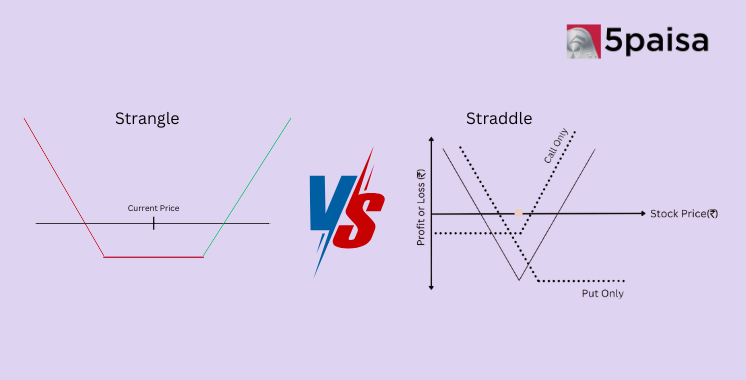Emerging Trends in the Real Estate Sector

For Millennials and Generation X, purchasing a home using their capital gains (from stock markets, mutual funds, etc.) is ultimately the most important goal. It is becoming increasingly common for millennials too, directly and indirectly, purchase homes.
According to a survey by Anarock, Generation Z prefers to use their capital gains to start a business or take a vacation. Interestingly, there is a growing interest in real estate investments among this younger age group as well. At least 20% of the Gen Z population is interested in using their capital gains to eventually purchase real estate. While Baby Boomers favor saving primarily for retirement and an emergency fund. 15% of baby boomers do, however, also intend to use their capital gains to purchase a home in the future.
End-users will continue to Dominate the market:
With 69% of participants looking to buy a home for their own use, end-users continue to dominate the Indian residential market. During the pandemic, home ownership has for many people become a compelling reality. In addition to giving them the greatest sense of satisfaction from owning a physical asset, it also gives them a feeling of security in times of need, like the pandemic.
Additionally, after Covid-19, there has been a discernible change in consumer preferences. The proportion of participants looking to purchase real estate for investment purposes as opposed to personal use has increased by 2% from last year. Now, at least 31% are interested in buying a home as an investment.
It's interesting that long-term investors, those who plan to hold their investments for 8 to 10 years, had the best outlook for H1 2022. More than half of the respondents said that compared to a year ago, the residential market is currently a little better for investments.
Alternatively, one-third of respondents (roughly 33%) believe that the market is about the same as it was a year ago and that investment opportunities are still available.
Ready homes Vs New Projects:
The gap between ready properties and new launches is seen to be closing considerably across the cities, with a ratio of 30:25 in H1 2022, even though ready homes continue to be in high demand. The ratio of completed homes to new construction as of H1 2020 was 46:18.
The significant increase in new supply is one of the main causes of this and provided a list of developers for potential homebuyers to have more faith in the timely completion of projects. Homebuyers' confidence in new launches had previously waned as a result of smaller players dominating new launches and multiple delivery delays. They favoured ready-made homes the most. The large and publicly traded developers who are now competing in the market are reporting a significant increase in housing sales in their new projects.
Luxury properties priced above Rs. 1.5 crore are gaining popularity:
As a result of the pandemic, top cities saw an increase in demand for larger spaces and a significant shift in consumer preferences. The demand persists even though businesses and schools have resumed operations, and life is now almost back to normal. Notably, the demand for 3BHKs has surpassed that of 2BHKs for the first time ever, marking a significant trend reversal. According to the recent survey, 44% of participants would prefer to purchase a 3BHK, while 38% are looking for 2BHKs. At least 46% of voters preferred 2 bedrooms last year, compared to 40% who preferred 3 bedrooms. In addition, the demand for 4BHKs has increased, going from 2% prior to Covid to 5% during that time, and then to 7% this year, indicating that the demand for larger spaces is likely to persist for some time.
At least 42% of respondents said they would prefer to purchase a home in the city's outskirts, demonstrating the continued high demand for such properties. Even though most offices and schools have reopened and daily life has largely returned to pre-pandemic levels, homebuyer preferences haven't really changed in H1 2022.
While the mid-segment (Rs. 45 lakh to Rs. 90 lakh) remains the most preferred segment among homebuyers (at least 34%), the luxury segment is gaining traction as well. In comparison to the pre-Covid survey (in 2019), the share of votes for luxury homes has increased by 4%, rising from 6% pre-Covid to 10% in H1 2022. Meanwhile, demand for premium vehicles is priced between Rs. 90 lakh and Rs. 1.5 crore increased over the same time period, rising from 18% in the pre-Covid survey to 24% in H1 2022.
Because of the tendency for larger and more affordable homes in the suburbs, homebuyers continue to favor living there. This might also be the case because many workplaces currently use a hybrid work model that only requires employees to work from the office a limited number of days per week. Many IT/ITeS workers can still work two or three days a week from home.
If home loan rates rise above 9.5%, housing sales will suffer:
Since the pandemic, a low home loan rate that briefly dropped as low as 6.5% has been one of the major factors influencing housing sales all over the nation. To combat inflation, the RBI raised the repo rate three times in a row starting in 2022, which raised the cost of home loans. Currently, it is 8% or higher in the majority of banks.
Understanding buyer attitudes and how they affect their decisions to buy homes became crucial. Interestingly, for 90% of respondents, there will be no impact if rates remain below 8.5%. Alternatively, there will be a "high impact" on their choice if rates go over the 9.5% threshold.
Furthermore, for at least 47% of respondents, there will only be a "moderate impact" if rates remain between 8.5% and 9%.
High inflation has impacted the disposable incomes of at least 61% of respondents:
Not just in India but around the world, inflation is a source of concern. Since the pandemic, India's inflation has been gradually rising, which has had a direct effect on many people's disposable incomes. This was further supported by the survey, where up to 61% of participants believed that high inflation had significantly affected their disposable incomes.
The impact was moderate for 34% of the respondents. Only 5% of respondents thought the impact was negligible. Additionally, it influences a number of potential buyers' decisions to purchase homes directly or indirectly.
- Flat ₹20 Brokerage
- Next-gen Trading
- Advance Charting
- Actionable Ideas
Trending on 5paisa
Indian Stock Market Related Articles
Disclaimer: Investment in securities market are subject to market risks, read all the related documents carefully before investing. For detailed disclaimer please Click here.
 Tanushree Jaiswal
Tanushree Jaiswal
 5paisa Research Team
5paisa Research Team
 5paisa Research Team
5paisa Research Team




